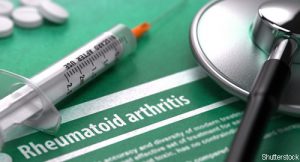 At week 12, patients with rheumatoid arthritis (RA) in the global phase 2b Renoir study (NCT06041269) demonstrated improvements in their signs and symptoms. This study evaluated the agent’s safety, efficacy, tolerability, pharmacokinetics and pharmacodynamics in patients with moderate to severe RA compared with placebo.1
At week 12, patients with rheumatoid arthritis (RA) in the global phase 2b Renoir study (NCT06041269) demonstrated improvements in their signs and symptoms. This study evaluated the agent’s safety, efficacy, tolerability, pharmacokinetics and pharmacodynamics in patients with moderate to severe RA compared with placebo.1
Rosnilimab is a therapeutic antibody that targets PD-1 on the surface of activated T cells, influencing the pathogenesis of inflammatory diseases, such as RA and ulcerative colitis. Rosnilimab is a targeted therapy intended to restore the immune system back to a homeostatic state by depleting PD-1high T cells and distressing remaining PD-1+ T cells. This process is expected to reduce T cell proliferation, migration, cytokine secretion, plasma cell generation and autoantibody levels in both inflamed tissue and the periphery.2
Methods
The Renoir study enrolled patients (N=424) with a mean, baseline disease activity score-28 joints (DAS-28) C-reactive protein (CRP) score of 5.64 and a mean baseline of clinical disease activity index (CDAI) score of 37.7. Enrolled patients were either biologic or targeted synthetic disease-modifying anti-rheumatic drug (DMARD) naive (59%; n=250) or biologic or targeted synthetic DMARD experienced (41%; n=174). Patients who had taken DMARDs reported the prior use of at least one biologic or targeted synthetic therapy. These therapies included tumor necrosis factor (TNF) α inhibitors, B cell inhibitors, selective costimulatory modulators or Janus kinases (JAK) inhibitors. All patients received rosnilimab along with background conventional DMARDs. (Note: The study did not specify which conventional DMARDs patients used.)
During the study, patients were randomized to receive either 100 mg of subcutaneously rosnilimab every four weeks, 400 mg of rosnilimab every four weeks, 600 mg of rosnilimab every two weeks or placebo. The study’s primary end point was the mean change from baseline in DAS-28 CRP score at week 12 for all three doses of rosnilimab compared with placebo. Secondary end points were assessed at both weeks 12 and 14.
After week 14, rosnilimab-treated patients who achieved a CDAI low disease activity (LDA) score of less than 10, continued their assigned treatment through week 28 in a blinded, all-active treatment period.
The Results
All three doses of rosnilimab achieved statistical significance in the mean change from baseline of DAS-28 CRP at week 12 compared with placebo, as well as statistical significance on key secondary end points of ACR20, ACR50 and CDAI LDA.
Of rosnilimab-treated patients, 69% achieved CDAI LDA at week 14 and seemed to have sustained CDAI LDA and ACR50 responses—potentially developing toward ACR70 responses for week 28. Investigators also observed a reduction of PD-1high T cells, an increase in regulatory T cells and a reduction in CRP in patients in all rosnilimab treatment groups compared with placebo. (Note: Tregs are a subset of CD4+ T cells that maintain immune tolerance and prevent autoimmune diseases by suppressing immune responses. They suppress the activity of other immune cells, helping to maintain a balance in the immune system.)
